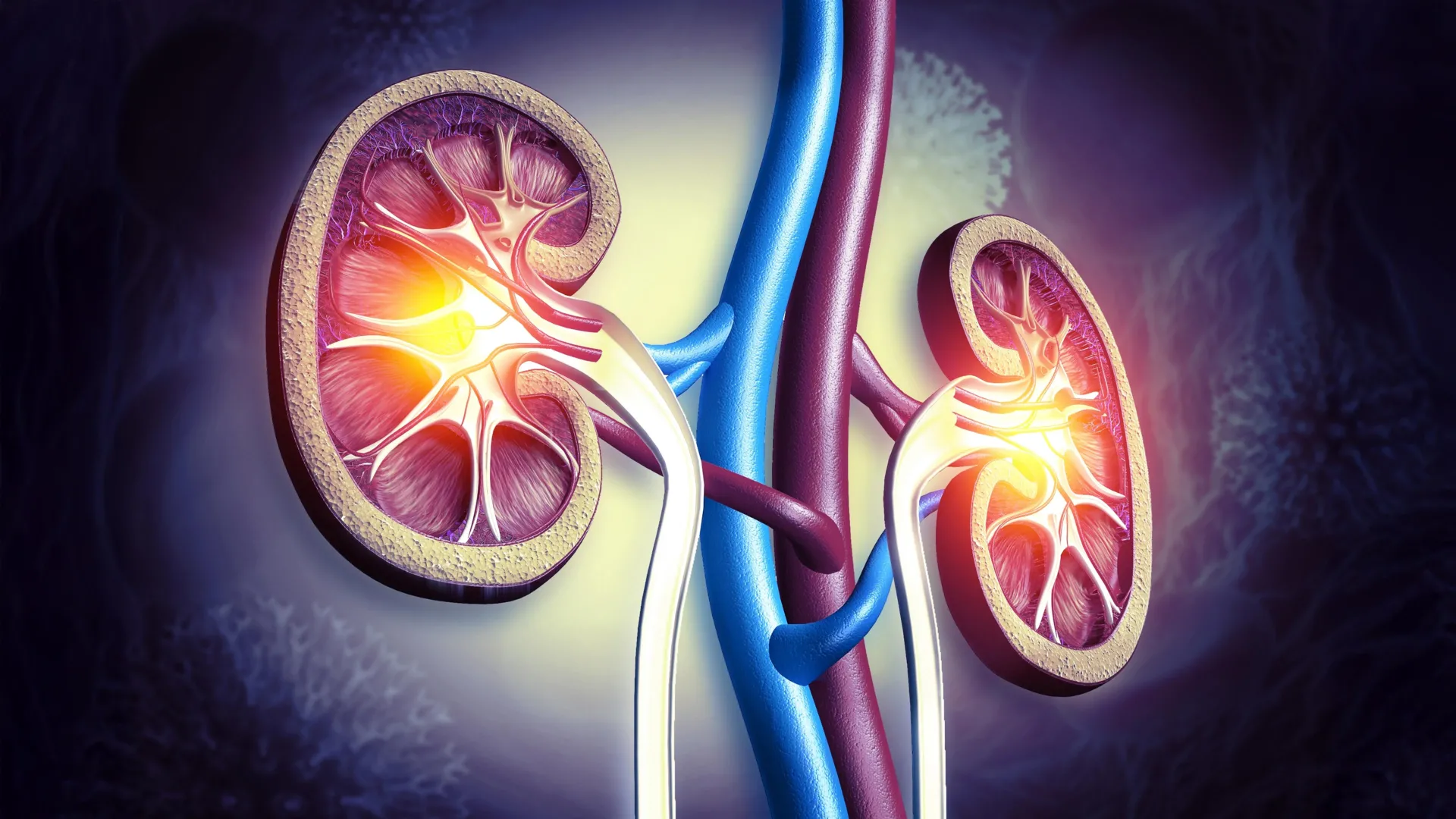New discovery could help stop diabetes damage at its source
Researchers found a molecule that stops a key source of diabetes-related tissue damage and helps the body heal faster.
- Date:
- November 15, 2025
- Source:
- NYU Langone Health / NYU Grossman School of Medicine
- Summary:
- Scientists identified a small molecule that interrupts a harmful protein pair linked to diabetic inflammation and tissue damage. The compound helped wounds heal faster and reduced organ stress in both Type 1 and Type 2 diabetes models. Unlike typical treatments, it works by blocking damaging signals rather than lowering sugar levels. The results point to a new direction for treating diabetes complications.
- Share:

An experimental compound has been found to limit cell death, reduce inflammation, and lessen organ damage associated with diabetes.
A research team at NYU Langone Health reported that, in mouse studies, a drug candidate successfully prevented two proteins from interacting: RAGE and DIAPH1. When these proteins come together, they contribute to heart and kidney injury linked to diabetes and slow the healing of wounds.
Blocking a Key Protein Interaction Boosts Healing
The findings, recently featured as a cover story in Cell Chemical Biology, show that keeping DIAPH1 from attaching to RAGE can ease swelling in diabetic tissues and promote more efficient repair. Tests conducted in human cells and mouse models revealed that the compound significantly reduced both immediate and long-term complications in Type 1 and Type 2 diabetes. The compound, known as RAGE406R, is a small molecule named for the protein it targets.
"There are currently no treatments that address the root causes of diabetic complications, and our work shows that RAGE406R can -- not by lowering the high blood sugar, but instead by blocking the intracellular action of RAGE," said co-senior study author Ann Marie Schmidt, MD, the Dr. Iven Young Professor of Endocrinology at the NYU Grossman School of Medicine. "If confirmed by further testing in human trials, the compound could potentially fill gaps in treatment, including that most current drugs work only against Type 2 diabetes."
How RAGE and DIAPH1 Contribute to Damage
RAGE is a receptor, a type of protein that responds to signaling molecules known as advanced glycation end products (AGEs). These molecules form when proteins or fats bind to sugars, a process that occurs more frequently in people with diabetes. AGEs accumulate in the bloodstream in individuals with diabetes and obesity, and also naturally increase with age.
Experiments showed that RAGE406R competes for the binding site on RAGE that DIAPH1 normally occupies. DIAPH1 helps form actin filaments, which are part of the cell's internal structure. The researchers demonstrated that DIAPH1 connects to the inner tail of RAGE, and this pairing increases the formation of actin structures that intensify diabetic complications.
Developing a Safer and More Effective Molecule
Schmidt's team previously screened a library of more than 58,000 molecules and identified several that interfered with the RAGE-DIAPH1 pathway. Their earlier lead compound, RAGE229, did not pass a standard safety test designed to flag structural features that might alter DNA and raise cancer risk. RAGE406R removes the part of the structure that created this concern.
The team then tested RAGE406R in a widely used model for chronic diabetes complications: delayed wound healing in obese mice with Type 2 diabetes. In both male and female mice, applying RAGE406R directly to the skin accelerated wound closure.
Reducing Misplaced Inflammation to Support Repair
Many of the compound's benefits stem from its effects on the immune system. The immune response is designed to detect and eliminate harmful invaders such as bacteria and viruses. When activated, it can cause inflammation, which includes swelling triggered by immune cells gathering at an injured area. In diabetes, inflammation often occurs in the wrong places or lasts too long.
RAGE406R lowered the levels of CCL2, a major proinflammatory signaling molecule. Reducing CCL2 activity calmed inflammation in macrophages, a type of immune cell. This shift helped support structural remodeling in tissues, an essential part of the healing process.
"Our findings point to a promising new pathway for treating diabetes in the future," said co-senior study author Alexander Shekhtman, PhD, a professor in the Department of Chemistry at the State University of New York (SUNY) at Albany. "The current study results serve as a springboard for the development of therapies for both types of diabetes, and for designing markers that can measure how well the new treatment works in live animals."
Contributors and Funding Support
Along with Schmidt, contributors from the Diabetes Research Program in the Department of Medicine at NYU Langone Health include co-first author Michaele Manigrasso, as well as Gautham Yepuri, Kaamashri Mangar, and Ravichandran Ramasamy. Additional NYU Langone collaborators include Sally Vanegas from the Department of Medicine and Yanan Zhao and Huilin Li from the Division of Biostatistics in the Department of Population Health. Shekhtman's group at SUNY at Albany includes first author Gregory Theophall, Parastou Nazarian, Aaron Premo, Sergey Reverdatto, and David Burz. Robert DeVita, PhD, from RJD Medicinal Chemistry and Drug Discovery Consulting LLC, also contributed to the research.
This work was funded by U.S. Public Health Service grants 1R24DK103032, 1R01DK122456-01A1, P01HL146367, and 5R01GM085006. The NYU Histology Core receives partial support from the Perlmutter Cancer Center support grant P30CA016087. Additional backing came from the Diabetes Research Program at the NYU Grossman School of Medicine. Drs. Manigrasso, Ramasamy, and Schmidt are listed on patent applications owned by NYU Langone Health related to this research. Their relationship to this intellectual property is being managed in accordance with NYU Langone Health policies. Dr. DeVita, who consults for NYU Technology Opportunities & Ventures' Therapeutics Alliances and for Intercept Therapeutics, was compensated for his involvement.
Story Source:
Materials provided by NYU Langone Health / NYU Grossman School of Medicine. Note: Content may be edited for style and length.
Journal Reference:
- Timothy N. Perkins. Disrupting intracellular RAGE signaling to combat pathological inflammation in disease. Cell Chemical Biology, 2025; 32 (10): 1197 DOI: 10.1016/j.chembiol.2025.09.010
Cite This Page: